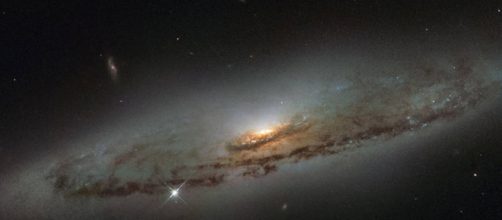Scientists witnessed an unusual event, when a flare coming from a black hole gulped down a body greater than the size of Jupiter. The body may have been a brown dwarf or a big planet that approached near to be swallowed by the voracious core of NGC 4845. The image showing this event was taken by Hubble Space Telescope´s Wide Field Camera 3.
NGC 4845
This is a spiral galaxy situated at approximately 65 million years away from earth in the constellation Virgo. This galaxy was first observed by William Herschel in 1786. This galaxy hosts a supermassive black hole-with a mass of around 300,000 solar masses-in its core.
Supermassive black holes are known to exist in almost every massive galaxy.
Galaxies
These types of bodies are systems of gravitational fixed systems of matter, including stars, stellar remnants, gas, dust, and dark matter. They vary in size from dwarfs containing a few thousand stars to massive with trillions of stars. They orbit around their own core of mass and are classified based on their shape; elliptical, spiral, or irregular. Spiral and elliptical galaxies are thought to have black holes in their centers.
How do they know there is a black hole there?
In galaxy NGC 4845's bright center resides a colossal black hole hundreds of thousands of times more massive than the sun. Scientists know that a black hole exists in the center of this galaxy by the effect the innermost planets present.
These stars are more influenced by the gravitational pull of the black hole and orbit around the center of the galaxy with greater speed.
By studying the movement of these stars, astronomers can obtain at approximate quantity of the mass comprising the central black hole. For this galaxy, it´s calculated to be around 300,000 times the mass of the sun. The black hole situated in the central region of the Milky Way is estimated to be approximately 4 million solar masses.
Black holes
It´s believed that black holes are created from the remnants of massive stars, which then grow by accretion of stellar matter and by merging with other black holes. Another hypothesis suggests that these huge stellar bodies are formed from the collapsation of large gas clouds in the early pre formation of stars, turning into a quasi-star (pre-black hole) and then a black hole.

